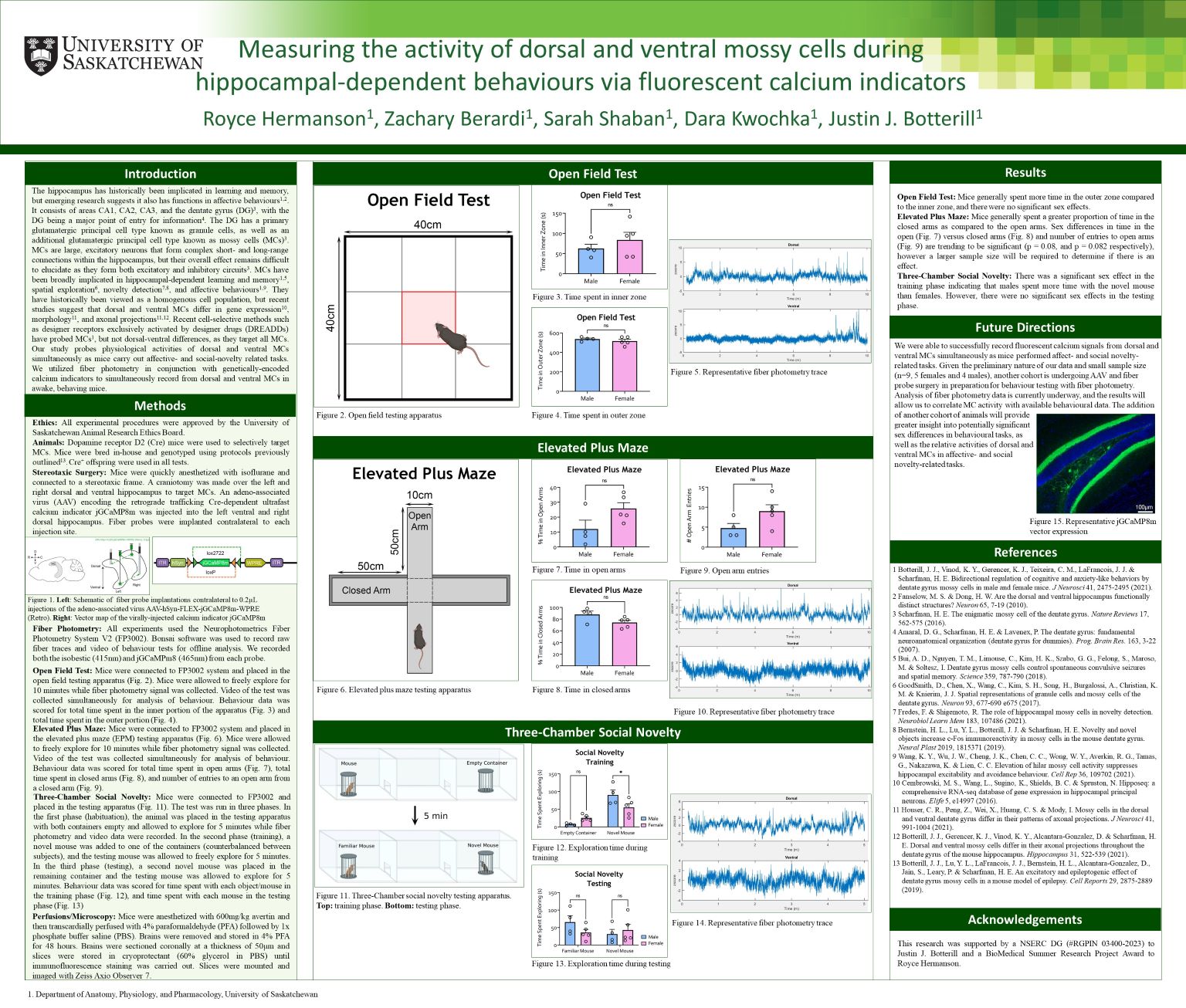
Measuring the activity of dorsal and ventral mossy cells during hippocampal-dependent behaviours via fluorescent calcium indicators
Royce Hermanson
The hippocampus has historically been implicated in learning and memory, but emerging research suggests it also has functions in affective behaviours. It consists of areas CA1, CA2, CA3, and the dentate gyrus (DG). The DG is a major point of entry for information. It has a primary glutamatergic principal cell type known as granule cells, and an additional glutamatergic cell type known as mossy cells (MCs). MCs are large, excitatory neurons that form complex connections within the hippocampus, but their overall effect remains difficult to elucidate as they form both excitatory and inhibitory circuits. MCs have been implicated in hippocampal-dependent learning and memory, spatial exploration, novelty detection, and affective behaviours. They have historically been viewed as a homogenous cell population, but recent studies suggest that dorsal and ventral MCs differ in gene expression, morphology, and axonal projections. Recent cell-selective methods such as designer receptors exclusively activated by designer drugs (DREADDs) have probed MCs, but not dorsal-ventral differences, as they target all MCs. Our study probes physiological activities of dorsal and ventral MCs simultaneously as mice carry out affect-related tasks. We utilized fiber photometry in conjunction with genetically-encoded calcium indicators to simultaneously record from dorsal and ventral MCs in behaving mice.
